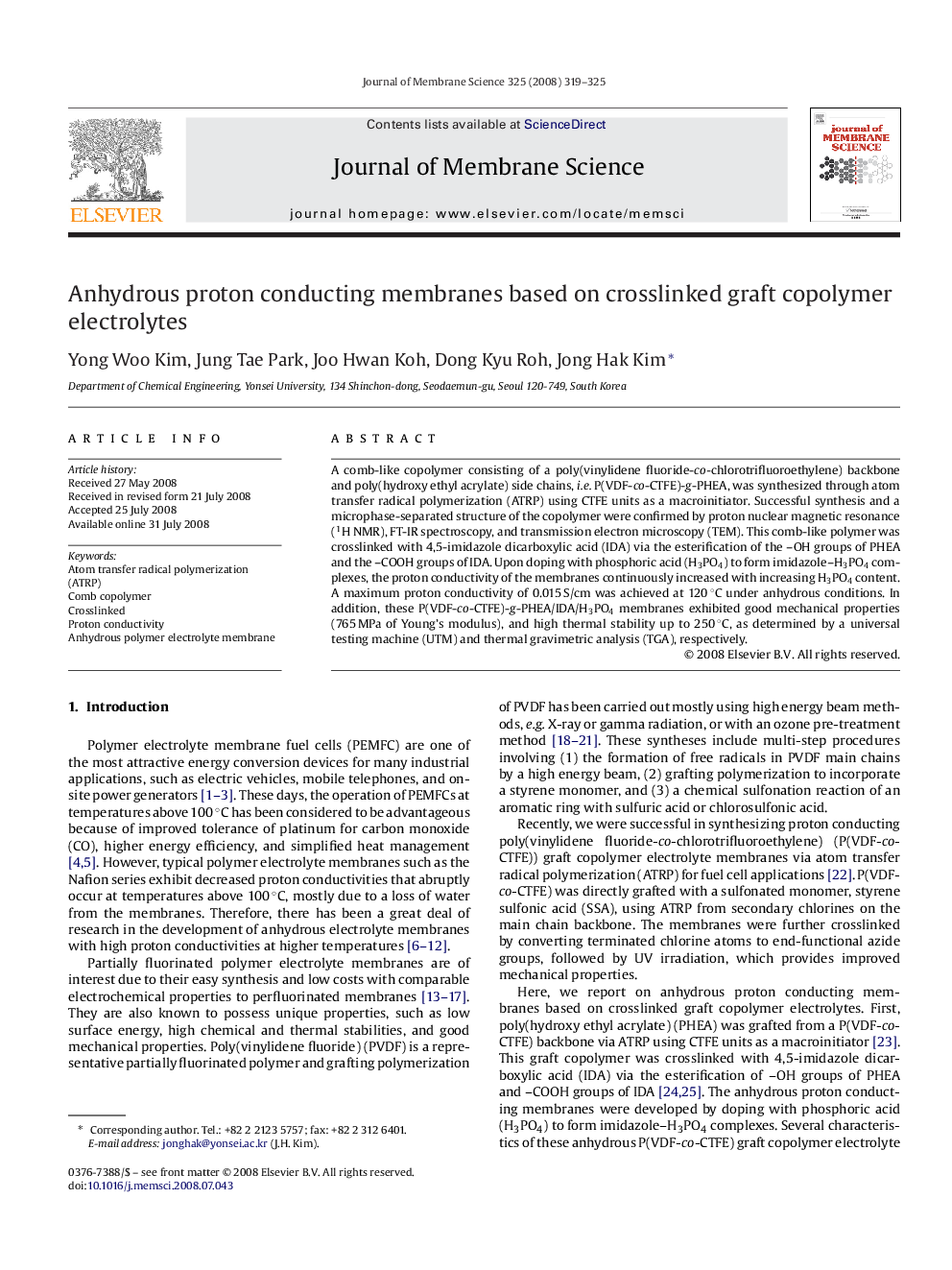| Article ID | Journal | Published Year | Pages | File Type |
|---|---|---|---|---|
| 637738 | Journal of Membrane Science | 2008 | 7 Pages |
A comb-like copolymer consisting of a poly(vinylidene fluoride-co-chlorotrifluoroethylene) backbone and poly(hydroxy ethyl acrylate) side chains, i.e. P(VDF-co-CTFE)-g-PHEA, was synthesized through atom transfer radical polymerization (ATRP) using CTFE units as a macroinitiator. Successful synthesis and a microphase-separated structure of the copolymer were confirmed by proton nuclear magnetic resonance (1H NMR), FT-IR spectroscopy, and transmission electron microscopy (TEM). This comb-like polymer was crosslinked with 4,5-imidazole dicarboxylic acid (IDA) via the esterification of the –OH groups of PHEA and the –COOH groups of IDA. Upon doping with phosphoric acid (H3PO4) to form imidazole–H3PO4 complexes, the proton conductivity of the membranes continuously increased with increasing H3PO4 content. A maximum proton conductivity of 0.015 S/cm was achieved at 120 °C under anhydrous conditions. In addition, these P(VDF-co-CTFE)-g-PHEA/IDA/H3PO4 membranes exhibited good mechanical properties (765 MPa of Young's modulus), and high thermal stability up to 250 °C, as determined by a universal testing machine (UTM) and thermal gravimetric analysis (TGA), respectively.
